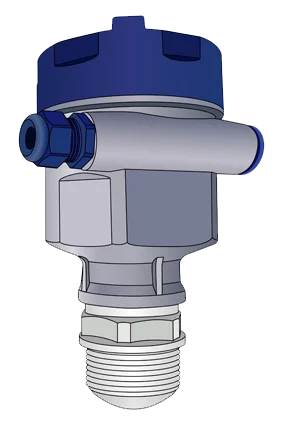How do Radar Tank Level Sensors Work?

Radar tank level sensors work by emitting a microwave signal and measuring the time it takes for the signal to travel to the surface of the liquid or chemical and back. This time, also known as the travel time, is used to calculate the distance to the surface of the liquid or chemical, and thus the level.
The sensor emits a microwave signal that travels through the air and strikes the surface of the liquid or chemical. Some of the energy in the signal is reflected back to the sensor, while the rest continues to travel through the liquid or chemical. The sensor measures the time it takes for the reflected signal to travel back to the sensor, which is used to calculate the distance to the surface of the liquid or chemical.
Radar tank level sensors are typically non-contact, which means they do not physically touch the liquid or chemical, and can measure through solid and opaque materials such as metal or plastic. They are suitable for use in extreme temperatures and pressures, and can be used to measure the level of a wide range of liquids and chemicals.
There are two types of radar tank level sensors: pulsed radar and continuous wave radar.
- Pulsed radar: Pulsed radar level sensors emit a short burst of microwave energy and measure the time it takes for the reflected signal to travel back to the sensor. This method is suitable for use in tanks with high levels of foam or vapor.
- Continuous wave radar: Continuous wave radar level sensors emit a continuous microwave signal and measure the frequency shift caused by the reflection from the liquid or chemical surface. This method is suitable for use in tanks with low levels of foam or vapor.
Radar level sensors use a variety of communication protocols, such as 4-20mA, HART, Modbus, Profibus, etc. that allows the sensor to be integrated into various control and monitoring systems. Additionally, they are also equipped with advanced features such as temperature compensation and echo-to-echo processing that enable accurate measurement even in challenging environments.
It’s important to note that while radar tank level sensors are suitable for use in a wide range of applications, they may not be suitable for use with certain types of liquids or chemicals, such as those that are highly conductive or corrosive. It’s always important to consult with an expert to determine the best level sensor for your specific needs.
Learn more about level sensors
Please contact us to discuss your application


